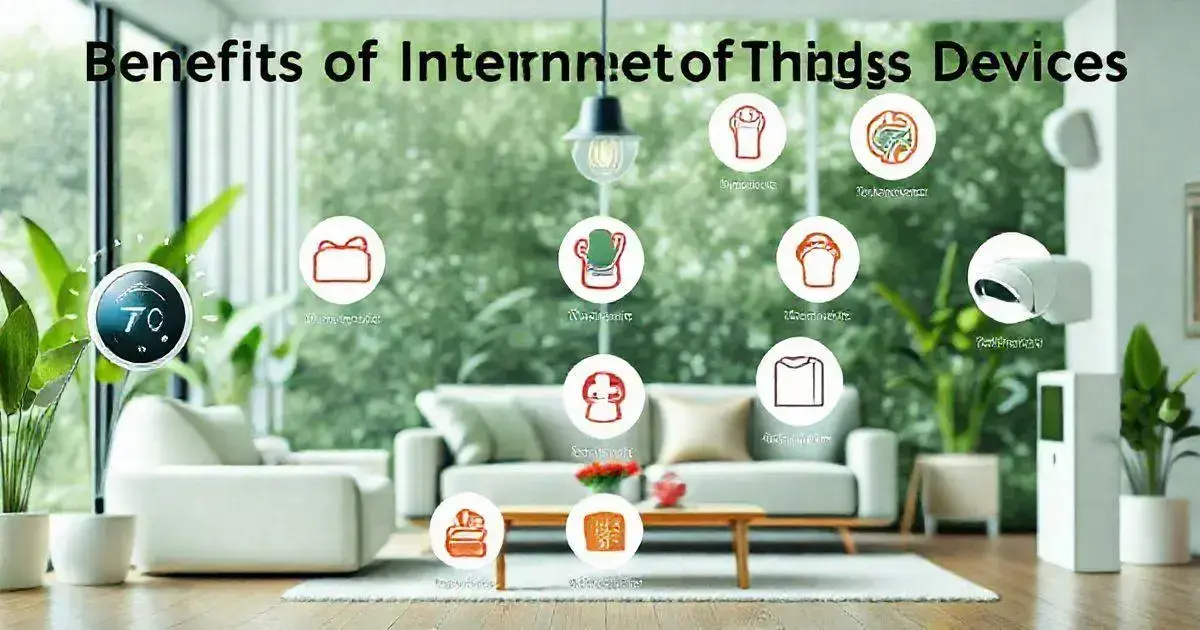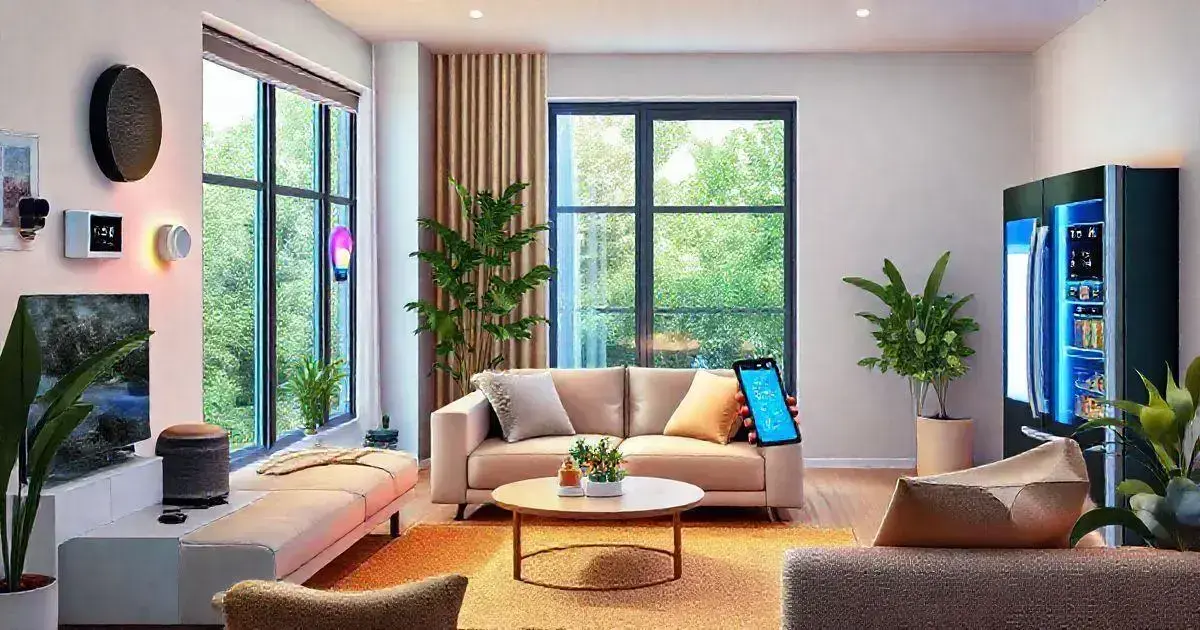The rise of Internet of Things devices (IoT) is transforming how we interact with technology. From smart homes to wearable fitness trackers, these devices seamlessly connect, automating everyday tasks and enhancing convenience. Their ability to collect and analyze data in real-time is making life more efficient.
Beyond convenience, Internet of Things (IoT) devices are improving industries like healthcare, transportation, and security. Smart sensors, connected appliances, and AI-driven assistants are streamlining processes, optimizing energy use, and increasing safety. As technology advances, these devices continue to integrate more deeply into our routines.
Understanding the impact of Internet of Things (IoT) devices is essential as they become more prevalent in our lives. Discover how these smart innovations can improve efficiency, security, and productivity. Keep reading to explore their full potential!
What are Internet of Things Devices?
Internet of Things (IoT) devices are smart tools that connect to the internet, allowing users to control and monitor them remotely. From smart thermostats to fitness trackers, these devices collect data and perform tasks intelligently. A great example is a thermostat that learns your heating preferences and adjusts automatically.
The functionality of Internet of Things devices relies on networks of sensors and software that communicate with each other. This seamless integration enhances user experience, providing better automation and efficiency. As businesses and homes increasingly adopt this technology, the potential for improved productivity continues to expand.
One of the key attractions of Internet of Things devices is convenience. A smart fridge, for instance, can notify users when groceries are running low or track expiration dates. These features revolutionize the way we handle daily responsibilities, making life more efficient.
Understanding Internet of Things devices and their capabilities is crucial for maximizing their benefits. As technology advances, these devices will continue to shape our interactions with the digital world, offering greater connectivity and smarter solutions.
Benefits of Internet of Things Devices

The benefits of Internet of Things (IoT) devices are numerous and impactful. These devices enhance daily activities by providing convenience and efficiency. For example, smart home devices allow users to control lighting, heating, and security systems from their smartphones, making everyday tasks much easier.
Another key benefit is the data collection ability of IoT devices. They gather valuable information to help improve services and products. For instance, fitness trackers monitor health metrics, enabling users to better understand their physical condition and make informed health decisions.
IoT devices also promote energy efficiency. Smart thermostats can adjust heating based on occupancy, which helps reduce energy bills and environmental impact. Additionally, these devices can automate routine tasks, freeing up time for users to focus on more important activities.
Moreover, IoT devices contribute to improved safety and security. Smart cameras and alarm systems provide real-time monitoring, giving users peace of mind whether they are home or away. This level of monitoring can significantly deter potential threats.
In summary, the integration of IoT devices into daily life brings about numerous advantages, from convenience and energy savings to enhanced safety and valuable data insights.
How Internet of Things Devices Work
Internet of Things (IoT) devices work by connecting to the internet through various networks. These networks can be Wi-Fi, Bluetooth, or even cellular data. Each device is equipped with sensors that collect and share data. This data is processed and sent to users in real-time. For example, a smart thermostat gathers information about room temperature and user preferences. It then uses this data to adjust the heating and cooling automatically.
The communication between devices is essential. IoT devices often communicate with each other through a central hub or directly. This allows for automation of tasks. For instance, when a motion sensor detects movement, it can trigger a smart light to turn on.
Cloud computing plays a vital role in IoT functionality. Many IoT devices send their data to the cloud, where it is stored and analyzed. This enables powerful insights that help improve performance over time. Users can access this data via mobile apps, allowing them to control their devices remotely.
Furthermore, security protocols are crucial. IoT devices must secure their data and ensure privacy. This includes encryption and regular software updates to protect against vulnerabilities.
In summary, IoT devices function by collecting, sharing, and processing data through internet connectivity, offering users enhanced convenience and control.
Popular Internet of Things Devices in 2025
In 2025, several popular Internet of Things (IoT) devices are changing how we interact with our environment. Smart speakers, such as the Amazon Echo and Google Nest, allow users to control their home with voice commands. They can play music, set reminders, and control other smart devices.
Smart home security systems, like Ring and Arlo, offer enhanced safety features. They include cameras, doorbells, and alarms that can be monitored remotely through smartphone apps. This level of connectivity ensures users feel secure whether they are at home or away.
Another category is wearable devices. Examples include smartwatches like the Apple Watch and Fitbit. These devices track health and fitness metrics, offering users insights about their activity levels and overall health.
Smart appliances are also on the rise. Refrigerators that notify you of expired food or washing machines you can control from your phone make daily chores easier. These devices not only save time but also improve efficiency.
Finally, smart lighting systems, such as Philips Hue, allow users to customize their home lighting with ease. They can change colours, set schedules, or control lights from their devices, enhancing both aesthetics and functionality.
Overall, the variety of IoT devices available in 2025 showcases how technology can simplify our lives and improve efficiency across different aspects of daily living.
Security Concerns with Internet of Things Devices
Security concerns with Internet of Things (IoT) devices are increasingly important as these products become more common in our lives. Many devices connect to the internet, making them vulnerable to cyber attacks. Hackers can potentially gain access to personal information, causing privacy issues and even financial loss.
One major concern is the lack of strong passwords in many IoT devices. Users often neglect to change default passwords, making it easier for hackers to take control. Regularly updating passwords and following best practices for password security is essential.
Data encryption is another critical issue. Without proper encryption, the data transmitted between devices can be intercepted. Manufacturers should implement strong encryption methods to protect user data. As a user, it is also important to check if devices support this feature.
Moreover, regular software updates are necessary to fix potential vulnerabilities. Many IoT devices do not update automatically, so users must take responsibility for keeping their devices secure. This includes checking for updates and installing them promptly.
Lastly, consumers need to be aware of the privacy policies associated with their devices. Understanding what data is collected and how it is used helps users make informed choices about their IoT devices.
Addressing these security concerns allows users to enjoy the benefits of IoT devices while minimising risks to their privacy and data.
Future Trends in Internet of Things Devices

Future trends in Internet of Things (IoT) devices are shaping the way we interact with technology. As more devices connect to the internet, we can expect an increase in smart home technology, allowing for greater automation and efficiency.
These devices will communicate with each other to enhance user experience and streamline daily tasks.
Another trend is the growth of the healthcare sector using IoT. Wearable devices, such as smartwatches and fitness trackers, will continue to evolve.
They will gather health data to provide real-time insights, helping individuals manage their health better.
Security will also become more critical as IoT devices proliferate. Innovative solutions, including advanced encryption measures and more effective authentication processes, will emerge to safeguard user data.
Manufacturers will need to prioritise security to build trust among consumers.
Furthermore, the integration of artificial intelligence with IoT will lead to smarter devices. AI can analyse data from various IoT devices, making recommendations and automating processes without user input.
This technology will improve efficiency and user satisfaction.
Lastly, sustainability will play a vital role. IoT devices will focus on energy efficiency and minimal resource usage.
As environmental concerns grow, adopting eco-friendly IoT solutions will be essential for consumers and businesses alike.
How to Choose the Right Internet of Things Devices
Choosing the right Internet of Things (IoT) devices involves several important factors. First, consider compatibility with your existing technology. Ensure the devices can connect and work well with your current home or office setup.
Next, look at the features offered by different devices. Some smart devices provide basic functionalities, while others offer advanced features such as motion detection, energy monitoring, or smart integration with other gadgets.
Security is another key concern. Before purchasing, check what security measures are in place to protect your data. Look for devices that support encryption and provide regular updates.
Additionally, consider the manufacturer’s reputation. Research brands that are known for producing reliable and high-quality products. User reviews can provide valuable insights into the performance and durability of devices.
Finally, think about your budget. IoT devices come in various price ranges. Determine how much you are willing to spend and weigh the features against the cost to find the best value for your needs.
Integrating Internet of Things Devices into Your Home

Enhancing convenience and security in your home is easier with Internet of Things (IoT) devices. Start by identifying areas where smart technology can add value, such as lighting, heating, security, or appliances.
Begin by selecting devices compatible with your home network. Most IoT devices rely on Wi-Fi or Bluetooth, so ensure you have a reliable internet connection in the spaces where these devices will be installed.
To simplify management, consider using a central hub. A hub allows you to control multiple devices through one app, streamlining their operation. Popular options include Samsung SmartThings and Google Nest.
Installing IoT devices is typically straightforward. Most require plugging in and connecting to your Wi-Fi. Always follow the manufacturer’s setup instructions to ensure proper installation and functionality.
Security is crucial for IoT systems. Replace default passwords with strong, unique ones and update device firmware regularly to protect against cyber threats. This step is essential for safeguarding your home network.
Once everything is set up, take advantage of automation features. For instance, schedule lights to turn on at sunset or program your thermostat to adjust based on your schedule. These features enhance both comfort and efficiency in your home.
The Impact of Internet of Things Devices
The Internet of Things (IoT) devices have significantly transformed our daily lives by offering convenience and efficiency across various sectors.
These devices enhance home automation, enable better health tracking, and streamline industrial processes, demonstrating their versatility and importance in modern living.
With the ability to collect and analyze data, IoT devices provide valuable insights that empower users to make informed decisions and improve productivity.
Despite these advantages, it is crucial to address security concerns to protect user data and maintain trust in these technologies.
As we move forward, the continued integration and innovation of IoT devices promise to shape the future, allowing for unprecedented connectivity and improved quality of life.
FAQ – Frequently Asked Questions about Internet of Things Devices
What are Internet of Things devices?
Internet of Things devices are objects that connect to the internet and can collect and exchange data.
How do IoT devices improve home automation?
IoT devices enable users to control appliances, lighting, and security systems remotely, providing convenience and efficiency.
What are the security concerns associated with IoT devices?
Security concerns include vulnerabilities to hacking, data privacy risks, and the importance of strong passwords and encryption.
How can IoT devices benefit my daily life?
IoT devices simplify tasks, enhance safety, improve energy efficiency, and provide insights through data collection.
What are some popular IoT devices available today?
Popular IoT devices include smart speakers, security cameras, smart thermostats, and wearable fitness trackers.
How do I choose the right IoT devices for my home?
Consider compatibility, features, security measures, manufacturer reputation, and your budget when selecting IoT devices.
Check out our article on Emerging Tech to discover the latest innovations that are shaping the future of industries and technology.
